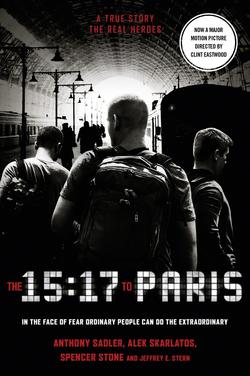Читать книгу The 15:17 to Paris: The True Story of a Terrorist, a Train and Three American Heroes - Anthony Sadler, Anthony Sadler - Страница 15
2.
ОглавлениеGUNS WERE PERHAPS the only difference between Heidi and Joyce. Spencer had free rein to play with whatever kind of toy he wanted, and his mother had given in to the fact that her boys loved guns, because—well, boys love guns. She had to laugh at Heidi who, bless her, still grasped on to her misplaced hope that Alek and his siblings would grow up in a gun-free household. Good luck, Joyce thought. The two new surrogate sisters established boundaries to deal with the one part of parenting that caused friction. The trash cans between their two houses marked the demilitarized zone: no guns on Heidi’s side.
It was just a few years later that Joyce walked out to see Heidi, waiting in the driver’s seat of her SUV, while a commando team of camouflaged teenage paintballers piled into the back. She was overrun; she’d given up. Joyce couldn’t help herself. “Man, Heidi,” she yelled, “looking good with all that camo!”
Heidi looked out the window, and tried to suppress a smile. Then they both exploded with laughter.
By then Alek and Spencer had formed a kind of impromptu league of war games. They tipped over trash cans in the street and dove behind cars, they gathered neighborhood kids to serve as comrades, lined up on opposite ends of Woodknoll Way, and charged, pelting each other with so many airsoft pellets that the gutters ran neon yellow and green, as if the roads of northeast Sacramento had been drenched by psychedelic rain. Other kids wanted in. Soon there were five to a side, then ten, running kamikaze charges at each other from opposite ends of the street.
There was no strategy at first, then it was just that if you got hit you were out, but how could you prove someone got hit? Arguments broke out, so it grew more intense, then became refereed by a set of unwritten and eagerly disputed rules, veritable conventions at the summit of Woodknoll Way, where two dozen arguing kids hammered out the finer points of make-believe warfare, all in an attempt to even the scales and maintain some sense of fairness. This became especially necessary because Alek began bringing firepower other kids couldn’t compete with. One day he came out to fight with what Spencer figured must be a $150 replica Colt 1911 gas-blowback CO2-powered pistol. Alek could fire rounds at 350 feet per second, so the other kids were diving behind cars and tumbling into hedges while Alek strafed the neighborhood like a pint-sized Tony Montana. Order had to be restored. So they started dividing up teams according to quality of equipment. Alek would be paired with whomever the new kid was who wanted to play but only had some pissant little peashooter.
Down a few streets from the Stone-Skarlatos Forward Operating Base, there was a kind of nature reserve behind the Schweitzer school, where the teachers used to teach things like Albert Schweitzer’s philosophy of reverence for life and peace, but that the boys colonized for the purpose of intensifying their philosophy of reverence for imaginary war. Behind BMX bike platforms and half pipes recast as antitank obstacles blocking imaginary tanks from amphibious landings on an imaginary Omaha Beach, they put on masks and fired off paintballs by the bushel. Paintballs were expensive on an allowance, but better than airsoft because you couldn’t cheat as easily. You could spend less time arguing and more time fighting.
Spencer never got tired of it, and Alek didn’t either; they’d started a little insurgency in their leafy Sacramento suburb; they fought into the night. And Spencer tried to make those days stand still, because even then he had the sense that other forces were coming along to change their lives; powerful forces beyond their ability to control. Something big and hard to see and almost impossible to confront, stronger than just him, which he and Alek would try to weather together, but that would eventually drive them apart. At least for a time.
